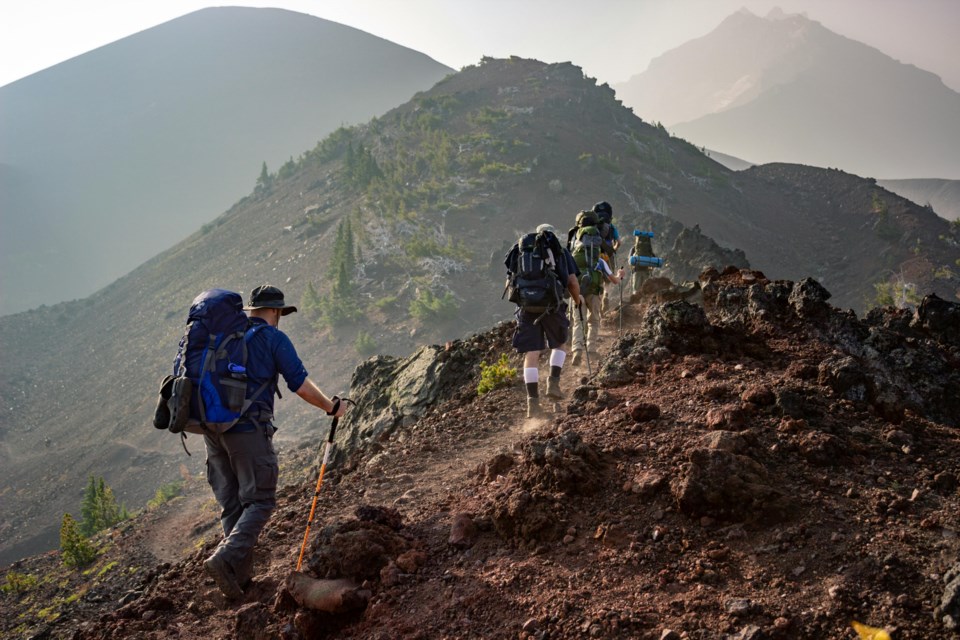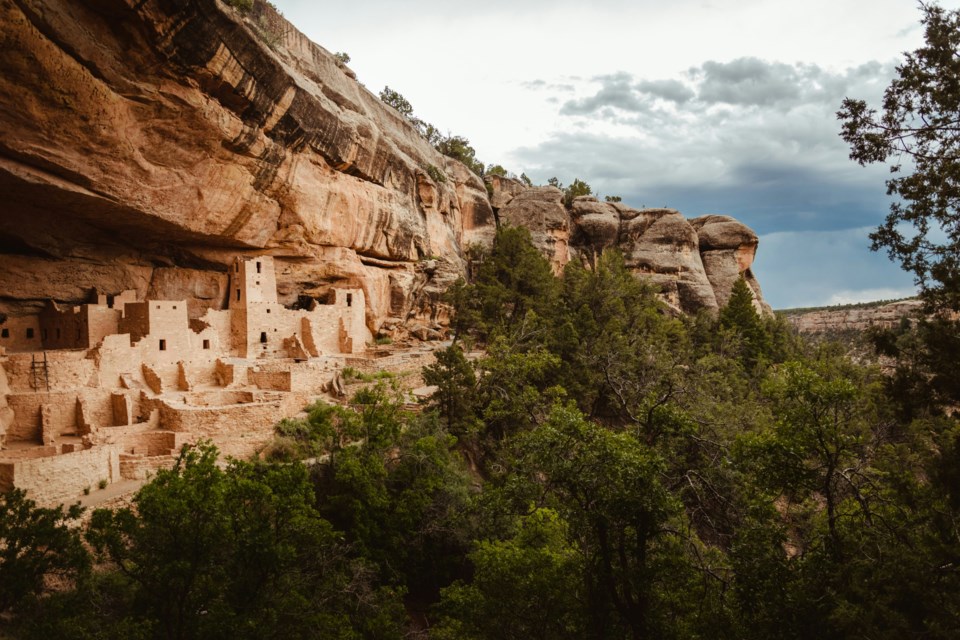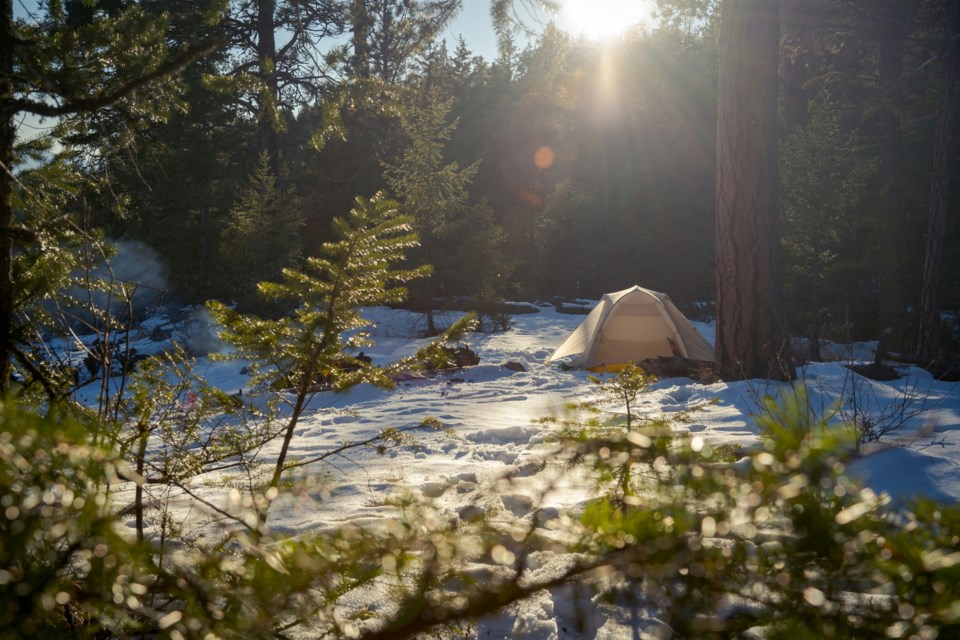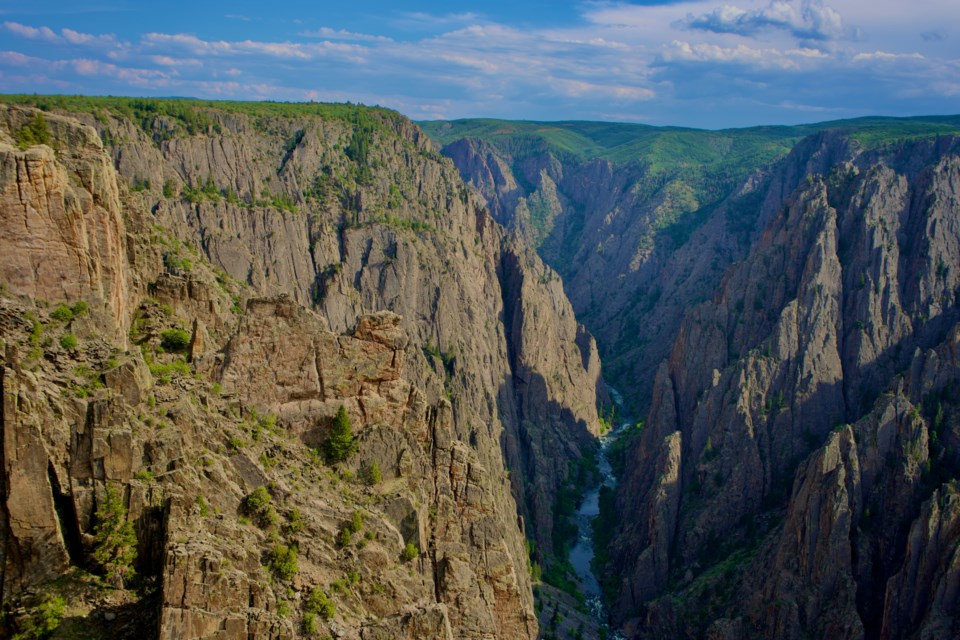
Colorado is home to some of the most breathtaking landscapes in the United States, and its national parks are a perfect showcase of the state's natural beauty. From towering mountain peaks to ancient cliff dwellings, these parks offer a wide range of outdoor adventures for all types of visitors.
Whether you're into hiking, fishing, camping, or just enjoying scenic views, Colorado's national parks have something for everyone. With diverse ecosystems, rich wildlife, and stunning vistas, they promise unforgettable experiences. In this article, we’ll explore the top national parks in Colorado, highlighting the must-see sights and activities.
4 National Parks in Colorado
Great Sand Dunes National Park and Preserve

Located in southern Colorado, Great Sand Dunes National Park is famous for its towering sand dunes that rise up to 750 feet, making them the tallest dunes in North America. These unique sand formations sit in stark contrast to the snow-capped Sangre de Cristo Mountains, creating a breathtaking landscape.
Visitors can hike, sandboard, or sled down the dunes, offering an exhilarating and fun-filled experience. During the spring and early summer months, the nearby Medano Creek flows, providing a natural spot to cool off while playing or wading through the shallow water.
The park is also recognized as an International Dark Sky Park, which makes it an ideal location for stargazing, offering clear views of the night sky. Whether you’re exploring the dunes, riding a board down the sandy slopes, or watching the stars above, Great Sand Dunes National Park offers a one-of-a-kind adventure that’s perfect for families, nature enthusiasts, and thrill-seekers alike.
Mesa Verde National Park

Mesa Verde National Park, located in the southwestern corner of Colorado near Cortez, is home to some of the most well-preserved ancient cliff dwellings in the United States. These adobe structures were built by the Ancestral Puebloans around 700 years ago and are perched on the cliff faces of the park's canyons, offering a rare glimpse into the lives of early Native American communities.
Visitors can explore iconic sites like Cliff Palace, Balcony House, and Spruce Tree House, with guided tours providing an in-depth look at the history, culture, and architecture of these ancient dwellings. The park also offers hiking trails, scenic overlooks, and a museum to further explore the cultural and natural history of the area.
As a UNESCO World Heritage Site, Mesa Verde National Park serves as a valuable educational resource, offering both history and breathtaking views of the surrounding landscape. It's a must-visit destination for anyone interested in ancient history, archaeology, and the preservation of Native American heritage.
Rocky Mountain National Park

Rocky Mountain National Park, one of Colorado’s most renowned national parks, spans 415 square miles and is home to rugged terrain, towering peaks, and diverse wildlife. The park features over 60 mountains that exceed 12,000 feet, with Longs Peak standing tall at 14,259 feet, offering a challenging climb for experienced hikers and mountaineers.
Visitors can enjoy a variety of outdoor activities such as hiking, fishing, wildlife watching, and camping, all while soaking in the park’s incredible scenery. The park is also home to a vast range of ecosystems, from lush forests at lower elevations to alpine tundra at higher altitudes, providing diverse habitats for a wide variety of wildlife including elk, moose, and bighorn sheep.
Trail Ridge Road, which reaches elevations over 12,000 feet, offers a scenic drive through alpine tundra and dense forests, providing sweeping views of the Rockies. Whether you're a nature lover or a seasoned adventurer, Rocky Mountain National Park is an unforgettable destination for all, offering something for every type of outdoor enthusiast and making it a crown jewel of Colorado's natural wonders.
Black Canyon of the Gunnison National Park

Black Canyon of the Gunnison National Park is one of the most dramatic and rugged landscapes in Colorado. This park is known for its deep, narrow gorge, carved by the Gunnison River over millions of years, with cliff walls that plunge as deep as 2,700 feet. The park’s steep and rocky terrain creates an awe-inspiring sight, especially from the park’s many scenic overlooks, where visitors can marvel at the raw, natural beauty of the canyon.
For outdoor enthusiasts, the park offers a variety of activities, including hiking, rock climbing, fishing, and camping, with the opportunity to explore the canyon’s wild beauty. The inner canyon, with its challenging trails, is a perfect spot for those seeking an adventurous experience, while the rim trails provide breathtaking views for those preferring a more leisurely outing.
The park also offers the chance to witness the river’s force as it continues to carve the canyon deeper over time. Black Canyon of the Gunnison offers a unique and rugged beauty that makes it a must-see for nature lovers, photography enthusiasts, and thrill-seekers alike. It’s a stunning destination for those looking to experience Colorado's untamed wilderness up close.
Why Visit National Parks in Colorado?
Colorado’s national parks offer some of the most stunning and diverse landscapes in the country, ranging from towering mountain peaks to expansive deserts and lush forests. Whether you're exploring the majestic Rocky Mountain National Park or the surreal Great Sand Dunes National Park, each park offers its own unique experience. These parks provide a perfect blend of natural beauty and outdoor adventure, making them must-visit destinations for nature lovers and adventure seekers alike.
In addition to the breathtaking views, national parks in Colorado offer a wide variety of activities such as hiking, camping, wildlife watching, and fishing. Whether you’re an experienced outdoor enthusiast or just looking to relax and soak in the views, these parks cater to all levels of adventure. With rich cultural and natural history to explore, visiting these parks allows you to connect with Colorado’s diverse environment in a truly meaningful way.
Best Time to Visit Colorado’s National Parks
The best time to visit national parks in Colorado depends on the type of experience you’re seeking. Summer (June-August) offers warm weather, making it ideal for hiking, camping, and exploring the parks' scenic trails.
However, it is also the peak tourist season, so expect larger crowds at popular parks like Rocky Mountain National Park and Mesa Verde National Park. Fall (September-November) is another fantastic time to visit, especially for those who want to experience the changing leaves and cooler temperatures.
The stunning autumn foliage in parks like Rocky Mountain and Great Sand Dunes National Park is an unforgettable sight. Winter (December-February) offers the chance to enjoy snow sports like skiing and snowboarding, particularly in Rocky Mountain National Park. While some areas may be inaccessible due to snow, winter brings fewer crowds, allowing for a more peaceful experience.
Outdoor Activities for All Skill Levels
National parks in Colorado are perfect for outdoor enthusiasts of all skill levels. Rocky Mountain National Park, for example, offers a range of hiking trails, from easy paths around Bear Lake to challenging hikes like Longs Peak.
The park is also home to abundant wildlife, such as elk and bighorn sheep, making it a great spot for wildlife watching. For those less inclined to hike, scenic drives and picnic areas provide a relaxing way to enjoy the views. Other parks like Great Sand Dunes National Park offer unique activities like sandboarding and sledding, providing an exciting adventure for visitors of all ages.
Mesa Verde National Park, with its ancient cliff dwellings, offers guided tours suitable for families and visitors of all fitness levels. These national parks in Colorado ensure that everyone, from beginners to experienced adventurers, can enjoy the wonders of the great outdoors.
What to Pack for a Colorado National Park Adventure
-
Dress in layers – Weather in Colorado’s parks can shift quickly, with cool mornings, warm afternoons, and chilly evenings. Layering helps you stay comfortable all day.
-
Choose moisture-wicking clothing – Breathable, quick-dry fabrics help manage sweat during hikes and keep you from getting cold once you stop moving.
-
Bring sturdy hiking shoes – Trails may include steep climbs, loose rocks, or muddy areas, so wear shoes with good ankle support and traction.
-
Don’t forget sun protection – Colorado’s high elevation increases sun exposure. Bring a wide-brimmed hat, UV-protective sunglasses, and high-SPF sunscreen.
-
Pack insect repellent – Mosquitoes and other bugs can be active in certain seasons and areas, especially near lakes or meadows.
-
Take reusable bags or containers – Help keep the park clean by carrying out all trash, leftover food, and used supplies responsibly.
Important Safety Tips for Visiting National Parks
-
Stay on marked trails – National parks are vast, and wandering off-trail can lead to getting lost, falling, or damaging the fragile ecosystem.
-
Acclimate to higher altitudes – Altitude sickness can affect anyone. Arrive a day early if possible, hike slowly, and allow your body time to adjust.
-
Drink plenty of water – Thin mountain air causes faster dehydration. Sip regularly, even if you don’t feel thirsty.
-
Keep your distance from wildlife – Animals like elk, moose, or bears may look peaceful, but they can be unpredictable and dangerous if approached.
-
Check the weather forecast – Mountain weather can shift within minutes. Check forecasts often and be prepared for sudden changes.
-
Follow all park rules and signage – Respect trail closures, wildlife warnings, and fire restrictions to help keep yourself and the park safe.
Conclusion: Embrace the Beauty of National Parks in Colorado
Exploring the national parks in Colorado offers an unforgettable adventure, whether you're seeking thrilling hikes, captivating wildlife, or stunning landscapes. With diverse ecosystems and unique natural features, these parks provide a wealth of experiences for visitors of all ages and skill levels.
By packing appropriately, following safety guidelines, and respecting the wildlife, you’ll be able to fully appreciate the beauty and grandeur of Colorado’s national parks. So, whether you're a seasoned adventurer or a first-time visitor, Colorado’s national parks are sure to leave you with lasting memories of nature’s splendor.

